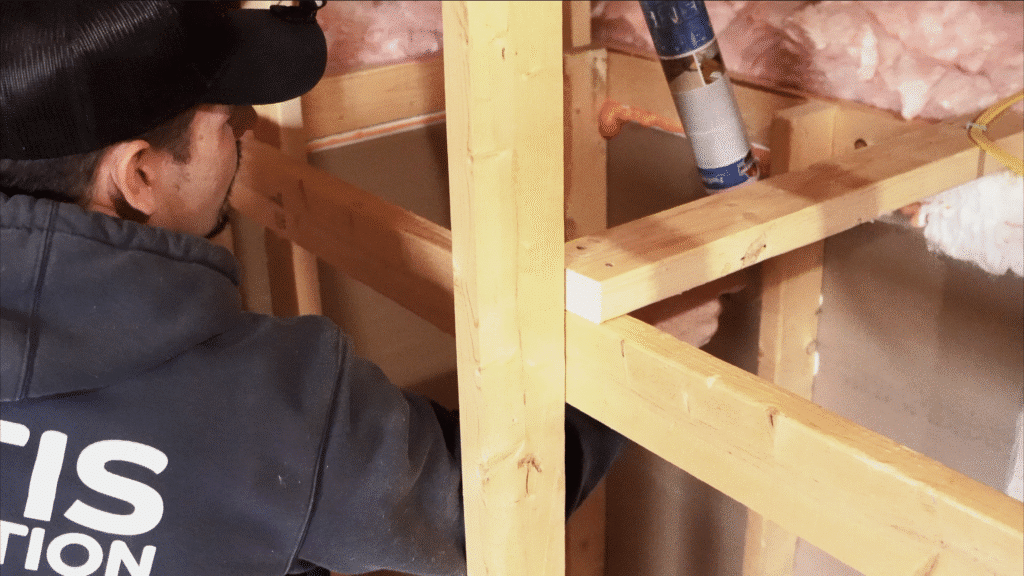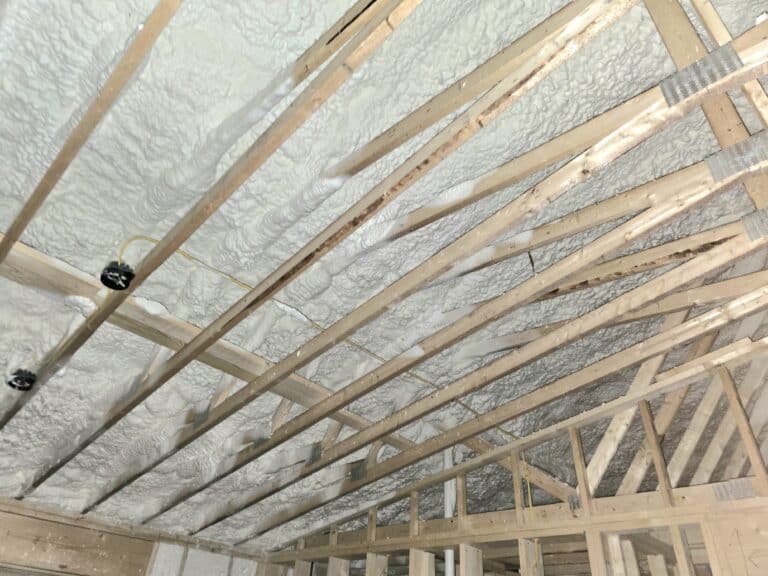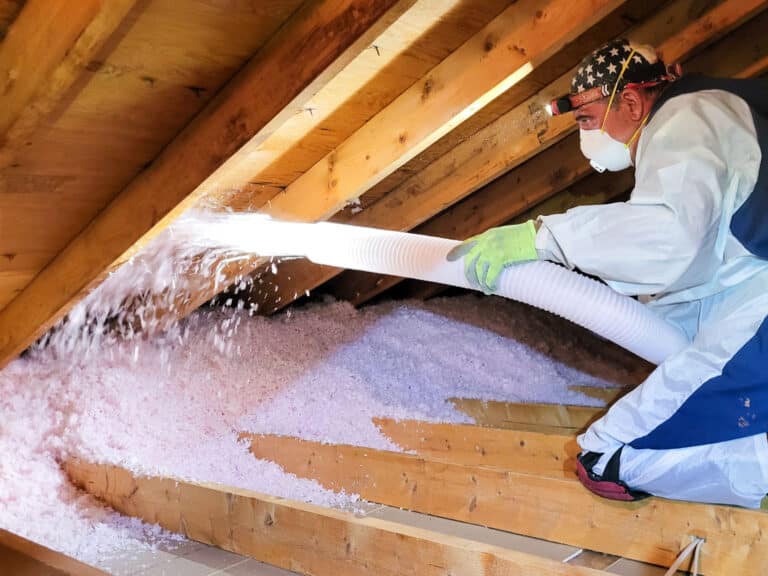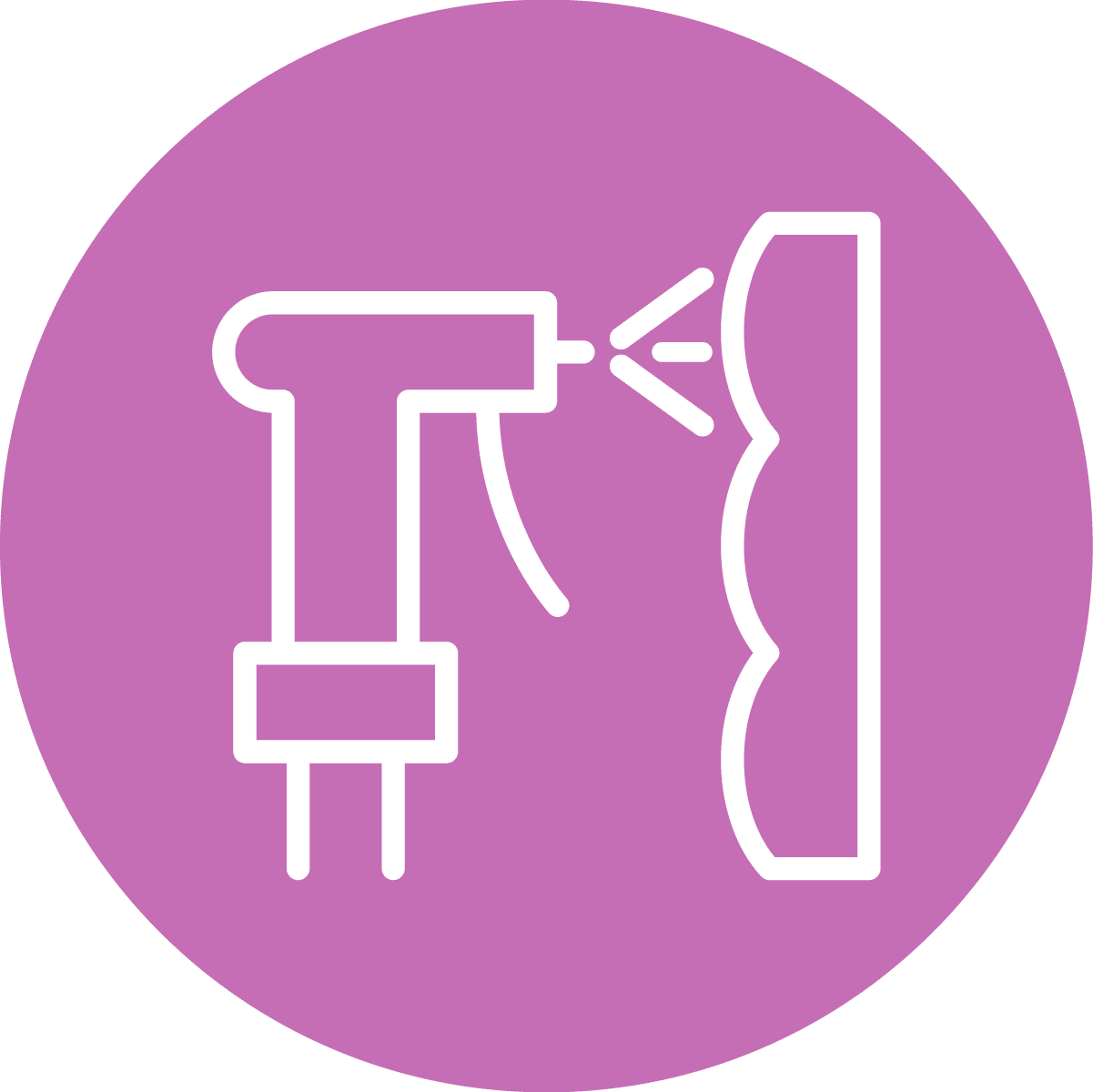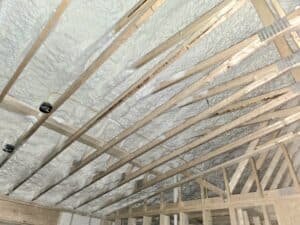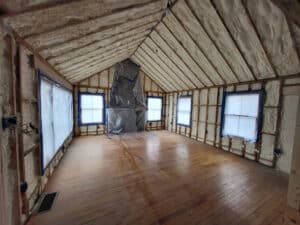When it comes to new construction, many builders focus heavily on structure, finishes, and meeting visual expectations — but often overlook one critical step: air sealing and blower door test requirements. In Pennsylvania, passing a blower door test is mandatory for occupancy, yet air sealing is frequently treated as an afterthought, or worse, ignored entirely. The result? Homes that are beautifully built but fail inspection due to excessive air leakage — forcing costly last-minute fixes, delays, and frustration for homeowners.
We first met this homeowner in spring 2024, right at the construction site of her dream home. The framing was up, and insulation was just around the corner. We had a long, detailed conversation about how critical air sealing is during construction — and how difficult and costly it can become if it’s overlooked. Especially if the home doesn’t pass its blower door test on the first try.
Blower Door Test — is a diagnostic tool used to measure how airtight the building is. During the test, a powerful fan is mounted in an exterior door to pull air out of the house, allowing detection of where air leaks in through cracks, gaps, and seams. The results are measured in ACH (Air Changes per Hour), and to meet the state’s energy code, homes must score 3 ACH or lower. If a house leaks too much air, it fails — delaying move-in and often requiring expensive corrections.
Fast forward 10 months — the homeowner called us again. The house was complete, but the situation had taken a turn.
This newly built 3-bedroom, 3-bath ranch home in Northeast PA had failed its blower door test with a result of 11 ACH (Air Changes per Hour), far above the code-required 3 ACH or lower. Because of that, the Certificate of Occupancy was denied, leaving her unable to move in — all while she was still paying rent elsewhere.
Thermal inspection also noted an uninsulated house floor, which was a relatively simple fix. But the real issue was massive air leakage throughout the structure.
About the Home
- 1,800 sq ft ranch with a 500 sq ft attached garage
- Exterior walls insulated with kraft-faced fiberglass batts
- Attic floor also insulated with batt insulation, but no air sealing
- Built on a 5’ vented crawl space
- Cathedral ceiling in the great room
- Common framing features like built-up beams and rim joists
Thermal imaging and the blower door test pinpointed most of the leaks at:
- Rim joists and floor penetrations
- Interior and exterior top plates
- Built-up beams
- Attic penetrations hidden under batt insulation
- One side of the cathedral ceiling’s top plate that was inaccessible from the attic
These were tough spots to seal now that construction was complete — especially since much of the batt insulation had already been installed.
Our Approach: 1-Day Air Sealing Rescue
Using a combination of materials and techniques, we tackled every leak point with precision:
| Area | Leak Points | Solution |
| Attic | Plumbing, wires, utility penetrations | FireBlock Foam, Caulk |
| Built-up beams | Closed Cell Spray Foam | |
| Interior and exterior top plates | Closed Cell Spray Foam (Handy Pack) | |
| Interior | Recessed lights, outlets, base trim | Caulk, Foam, Silicone |
| Crawl Space | Rim joist, utility penetrations | Closed Cell Spray Foam |
| Exterior | Top plate behind cathedral ceiling, built-up header | XPS Foam Boards (1.5”), Caulk, FireBlock Foam |
Built-up beams — often made of 5 pieces of lumber nailed together — are notorious for hidden air leaks. Wood shifts with humidity and temperature, creating cracks that leak air unless properly sealed. We foamed all these areas thoroughly, both from the attic and crawl space.
And yes — all existing insulation stayed in place! In some areas, we used the original architectural drawings to locate beams and top plates hidden under the fiberglass batts.
The Result? Code Passed!
After just one day of focused, post-construction air sealing, the home passed the blower door test with flying colors — under 3 ACH. The homeowner was finally able to move into her “forever home,” and the structure is now much more energy-efficient, comfortable, and protected from moisture and pests.
Whether you’re in the middle of a build or trying to troubleshoot air leaks after the fact, air sealing matters. Doing it right — even after construction — can make all the difference.
If you’re building in Northeast PA and want to avoid this kind of stress, reach out early. But even if it’s late in the game, we’re here to help.


